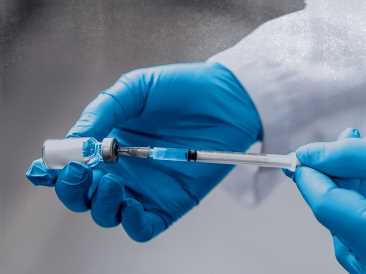The coronavirus disease 2019 (COVID-19) pandemic caused by the severe acute respiratory syndrome-associated coronavirus 2 (SARS-CoV-2) and past SARS-CoV outbreaks were a result of zoonotic spillover of sarbecoviruses from animals to humans. Although most of the animal sarbecoviruses do not infect eukaryotic cells, clade 4 sarbecoviruses recently found in China have been found to have a deletion similar to clade 3 sarbecoviruses and are capable of binding to human ACE2.
 Study: A sarbecovirus found in Russian bats uses human ACE2. Image Credit: Corona Borealis Studio/Shutterstock
Study: A sarbecovirus found in Russian bats uses human ACE2. Image Credit: Corona Borealis Studio/Shutterstock
About the study
A recent preprint study published in the bioRxiv* server tested the receptor-binding domain (RBD) of 2 sarbecoviruses found in Russian horseshoe bats – Khosta-1 found in Rhinolophus ferrumequinum and Khosta-2 in R. hipposideros – and other clades 3 viruses for their ability to invade the human cell. A phylogenetic analysis was performed with each sarbecovirus spike sequence used in this study having a Genbank accession number. The amino acid sequences of the spike RBD were aligned using ClustaIW multiple sequence alignment.
Chimeric spike expression plasmids were generated by replacing the RBD of SAR-CoV-1 with the Khosta virus RBD, and they were compared with chimeric RBDs of clade 3 viruses. The researchers used single-cycle vesicular stomatitis virus (VSV) pseudotype assay and SuperSignal western blot substrates for analysis.
Results
The three main findings of the study are: 1) Khosta virus RBDs are different from that of human viruses, 2) the RBDs from Khosta viruses facilitate entry into human cells, and 3) Khosta-2 virus RBD infects human cells using the ACE2 receptor.
During March-October, 2020, the Khosta-1 and -2 viruses discovered from bat samples near Sochi National Park were phylogenetically analyzed and it was concluded that they are closely related to clade 3 sarbecoviruses found in 2008 in Bulgaria. These viruses had a distinct viral lineage compared to human zoonotic viruses. Notably, the Khosta-1 and -2 viruses differ from clade 1 sarbecoviruses and have structural components that allow them to interact with the ACE2 enzymes.
Biosafety level-2 (BSL-2) compatible viral reporter pseudotypes with VSV were produced using the chimeric spike plasmids. The chimeric spike with RBD of clade 3 viruses showed reduced incorporation and had no correlation with viral entry phenotypes found in the later experiments. Investigations by the authors also showed that the presence of the exogenous protease trypsin enhanced the entry of Khosta viruses into human cells, indicating that the Khosta virus RBDs need a human cell receptor to mediate infection.
A receptor tropism test was also performed to characterize the receptors potentially used by the Khosta viruses, by transfecting Baby Hamster Kidney (BHK) cells with known human coronavirus receptors and then infecting the cells with the pseudotype panel. The results showed that Khosta-1 RBD failed to infect cells with any of the receptors, while Khosta 2 RBD infected cells with human ACE2 receptors. The cell entry potential of Khosta-2 RBD was similar to the RBD of RatG13 – a bat sarbecovirus – that closely resembles SARS-CoV-2 RBD.
Conclusions
This study demonstrated that animal-derived sarbecoviruses circulating outside Asian wildlife have the ability to infect human cells using ACE2. However, despite the clear compatibility of Khosta-2 RBD with human ACE2, pseudotype entry was nearly 10-fold lesser than that of SARS-CoV-1 and -2. Although both Khosta-1 and -2 RBDs infected human cells in the presence of the protease trypsin, Khosta-1 was notably stronger than Khosta-2. However, in the receptor-specific assay, only Khosta-2 infected human cells with ACE2 in the absence of trypsin.
The majority of previously identified animal sarbecoviruses are only distantly related to human pathogens and did not possess a risk to humans. The Khosta 1 and 2 viruses from Russian bats used in this study are from a distinct viral lineage of SARS-CoV-1 and 2 and have been found in a wider geographical range, proving that the sarbecovirus host-receptor compatibility is not limited to certain geographical locations. There is a variation in host-receptor compatibility in closely related sarbecoviruses and it suggests an evolutionary mechanism for viral persistence.
The present study identifies a new group of sarbecoviruses with zoonotic potential like clade 3 sarbecoviruses. Unfortunately, sarbecovirus vaccines currently in the pipeline only cover clade 1 and 2 viruses and do not include clade 3 viruses. The findings show that the sarbecoviruses pose a broader geographical threat than previously determined and highlight the need for advanced sarbecovirus vaccine measures.
*Important notice
bioRxiv publishes preliminary scientific reports that are not peer-reviewed and, therefore, should not be regarded as conclusive, guide clinical practice/health-related behavior, or treated as established information.
- Taylor Franklin Gunnels, Devin M Stranford, Neha Kamat, Joshua Nathaniel Leonard. (2021). Elucidating design principles for engineering cell-derived vesicles to inhibit SARS-CoV-2 infection. bioRxiv. doi: https://doi.org/10.1101/2021.12.04.4 https://www.biorxiv.org/content/10.1101/2021.12.05.471310v171153
Posted in: Medical Science News | Medical Condition News | Disease/Infection News
Tags: ACE2, Amino Acid, Assay, Baby, Cell, Coronavirus, Coronavirus Disease COVID-19, Kidney, Pandemic, Receptor, Respiratory, SARS, SARS-CoV-2, Severe Acute Respiratory, Severe Acute Respiratory Syndrome, Stomatitis, Syndrome, Vaccine, Virus, Western Blot

Written by
Susha Cheriyedath
Susha has a Bachelor of Science (B.Sc.) degree in Chemistry and Master of Science (M.Sc) degree in Biochemistry from the University of Calicut, India. She always had a keen interest in medical and health science. As part of her masters degree, she specialized in Biochemistry, with an emphasis on Microbiology, Physiology, Biotechnology, and Nutrition. In her spare time, she loves to cook up a storm in the kitchen with her super-messy baking experiments.
Source: Read Full Article



